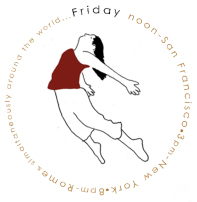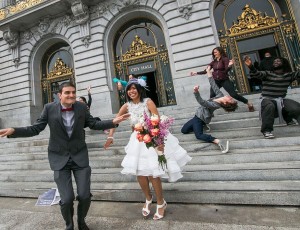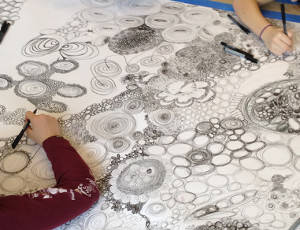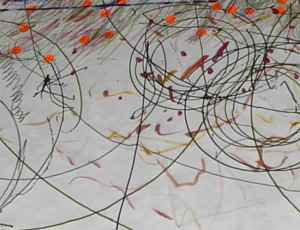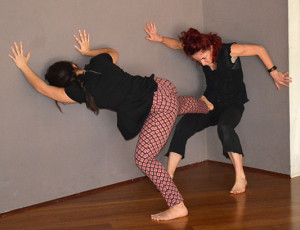AXIS Dance Company firmly believes that anyone can dance. Their performances integrate dancers with and without disabilities to create a whole new form of expression on the stage.
Once the music starts, the line between ability and disability disappears, and the audience’s preconceptions of dance vanish. The company tours the U.S. and abroad, and has expanded its education and outreach programs ensuring that both adults and children have an opportunity to experience dance.
Founded in 1987, AXIS Dance Company has garnered a reputation for being one the world’s most innovative ensemble of performers with the help of Artistic Director Judith Smith, who joined the company in 1997. Smith, who was a champion equestrian until she became disabled in a car accident at 17, never thought dance would play such a big role in her life until she came to Berkeley where she met a woman who was interested in dance and movement. One thing led to another, and soon Smith discovered that she had more mobility that she thought.
For Smith, AXIS is not about movement therapy for those with disabilities because dance is naturally therapeutic on a number of levels. AXIS strives to teach dance to everyone and anyone who feels the need to express themselves through movement. Though most of the performances do not directly deal with disability, each piece challenges notions of disability and audiences often leave with a new understanding about human potential. Smith has taught dance to youth and adults, and lectures at community organizations, schools, universities, and conferences. She has won numerous awards including the 2009 Alameda County Arts Leadership Award, KQED’s Local Hero and the Homer Avila danceAble awards in 2005.

Photo by Margot Hartford.
Can you tell us about your past experience with dance anywhere? Where were you? What was it like? And what piece did you perform?
Well I think the most memorable was in the Museum of Modern Art, and Sonsheree Giles and Rodney Bell performed an excerpt of Alex Keltley’s piece that he made for us. It’s a wonderful duet. The really fun thing is, I don’t know if you’ve been to MoMa, but they have those lights that follow you around in the lobby and the lights attached to Rodney and Sonsheree and followed them a bit.
What made you want to join? Why was dance anywhere so appealing to you?
Well AXIS has a long history of performing in non dance alternative venues, performing site specific work, performing outdoors. And I just feel like any time you can get your work to people who are probably not or might not come into a theater to see you perform, it’s great.
Will you be participating in dance anywhere again in 2013?
It’s possible that we will, but are in prep weeks for our 25th anniversary season and we maybe up to our gills, but we hope to be able to perform again. We would love to. It just kind of depends on what our schedule is like when we get closer to there. It’s very possible we could be somewhere near where we‘re going to need to be anyway, but I know we’re going to be in rehearsals and everything else so we will see. We hope to. Absolutely hope to. I think it’s a great event. I think it’s really wonderful to get dance happening in so many places and another time we actually did dance anywhere was when we were in Chicago at the Museum of Contemporary Art and we did Anne Carlson’s piece in the lobby and filmed it and sent it so that was fun too. We’ve done dance anywhere a few times and we love it. I love the concept.
How do you feel public performance impacts the community?
I think people really enjoy being surprised and I think they love happening upon things which is why it is wonderful to perform outdoors. You know places where you capture an accidental audience. And I think the impact is that they see something they’re not expecting. Dance usually always makes you feel better and it’s a nice way to give back to the community just to share what we spend so much time in the studio alone doing and creating.

Photo by Trib LaPrade.
What does dance mean to you?
Dance is just a way of life and when you pursue it as a way of life it impacts every other aspect of your life. Dance is just one of those things you should only do if it’s the only thing you absolutely can do. And I mean that on a soul level.
Since the performers at AXIS have a wide variety of movements available, how does a new piece come to life?
The way that we like to work is to plan to have one or two days with a choreographer just to go in and explore and let them explore us because we have dancers with disabilities and without, our movement vocabulary is very very different than a traditional company so I love to give choreographers a chance to just get to know us and who we are as individuals. And that’s generally how we start a process, with one or two days if not more of workshop.
Why do you think it is important for companies like AXIS to exist?
I think AXIS changes peoples ideas of what dance is, of what disability, about what ability is, and people want to dance and sometimes those people happen to be in a disabled body and sometimes those people happen to be not disabled by they really want to explore a different movement vocabulary and a different way of thinking about dance. I think integrated dance, the form of dance that we do really offers people a really different way of looking at human potential.
What is your view on the body as a means of artistic expression?
Well in dance you can’t really dance if you’re not in a body, you know. Dance starts with the body, and it starts with the body regardless of what type of body it is. And I feel like everybody is a really wonderful vessel for expression.

Photo by Trib LaPrade.
UPCOMING AXIS DANCE COMPANY PERFORMANCES:
AXIS Dance Company to perform for dance anywhere® at the Oakland Museum of California. Click here to see event page.
AXIS Dance Company – 25 Years of Inspired Dance
In honor of its anniversary the country’s leading physically integrated dance company celebrates reaching the quarter century mark and “25 Years of inspired dance” by continuing its tradition of commissioning work from groundbreaking choreographers with the upcoming debut of the first-ever collaboration between choreographer and Guggenheim Fellow Victoria Marks and composer/musician Beth Custer; titled what if, would you , it revolves around notions of how deductive thinking leads to if/then assumptions; also on deck new work from Amy Seiwert & Sonya Delwaide. Click here for more information.
When: Friday 4/12/13 @ 8pm, Saturday 4/13/13 @ 8pm & Sunday 4/14/13 @ 2pm
Where: Malonga Casquelourd Theater in Oakland, 1428 Alice Street (@14th), Oakland 94612 (Close to 12th Street BART)
Tickets: $10-25.

 Sign In
Sign In